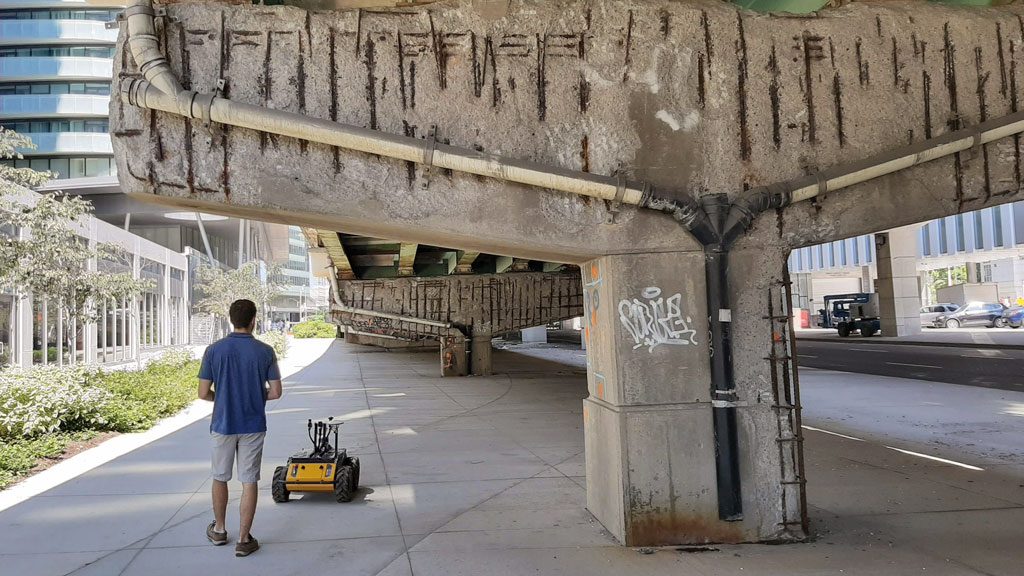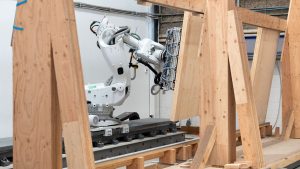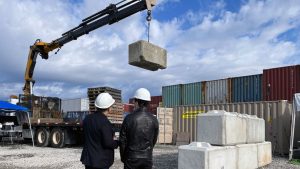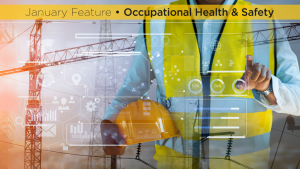Researchers at the University of Waterloo (UW) have developed an innovative new robotics technology that might make inspecting bridges a little easier, cheaper and safer while producing more reliable results.
Instead of the traditional method of sending out inspectors to do a visual, which more often than not requires specialized equipment such as lifts to be brought in to accomplish the task, the new system automates the process by combining autonomous mobile inspection robots, cameras and LiDAR — a remote sensing method that uses lasers to systematically collect data for defect detection and analysis.
“We can do more than humans now do — and do it much better in every way,” says Sriram Narasimhan, an engineering professor at UW. “It is very inexpensive because you don’t need as many inspectors relying on specialized equipment such as lifts, and you get much higher quality information.”
The robots used by the researchers are waist-high, a couple of feet long and have four large, perhaps oversized, treaded rubber tires. They essentially look like little yellow tanks, with a plethora of very shiny, metallic equipment on top. Two platforms have been developed — a smaller, nimbler version that is easy to transport in a passenger car, and a larger, more rugged version for inspecting rough terrain.
The robots can precisely measure the size of defects and reveal invisible, sub-surface problems like cracks, spalls and delamination in concrete elements of bridges with infrared cameras. They can also access areas of a bridge that are otherwise difficult to inspect and automate the process of collecting and processing data.
With thermal cameras, we can even view sub-surface defects,
— Sriram Narasimhan
University of Waterloo
The technology has three main components — a mobile platform, which is a ground robot manufactured by Clearpath Robotics in Kitchener; a sensor suite consisting of machine-vision cameras, a thermal camera and a LiDAR; and an artificial intelligence (AI) decision support system which takes the information collected by the sensors and converts it into actionable information.
Going through the sensor information manually is cumbersome, but the researchers employ AI tools, specifically deep neural networks, which are trained to automatically detect defects such as cracks, spalls and delamination when found and quantify them. The system provides detailed inspection reports that can be generated without having to do any manual intervention.
Results from an inspection can be overlaid from one examination to the next, allowing for modelling techniques to compute the remaining useful life of a component or condition of a bridge.
The platform can also produce high-quality digital scans of the structure, which can be used for creating building information models (BIM) rapidly. A paper on the research, called Automating Data Collection for Robotic Bridge Inspections, was published by the researchers in the Journal of Bridge Engineering.
Narasimhan says the benefit is that researchers can track and quantify defects as they evolve over time, something that can’t be done now.
“That is not practically possible with humans alone, but it is with the assistance of robots.”
In the research tests, a ground vehicle was programmed with an inspection plan detailing instruction on the location and areas of the bridge to focus on.
Narasimhan, director of the Structural Dynamics Control and Identification Laboratory at UW, said current practices create an inspection system that is subjective, less repeatable and often imprecise because it is based, at least in part, on educated guesswork by inspectors while the new system does not.
He got into the research because he’s always been interested in applying the latest sensors and signal processing and figuring out ways AI tools can be used to better enable infrastructure inspections.
He became particularly interested in applying AI technology to bridge inspections because such examinations are mandated by regulatory bodies and must be done biannually in most cases but are often done manually which is cumbersome and often results in bridge shutdowns.
Meanwhile, he explained, the same inspector might not inspect the same structure twice and, since measurements of defects are often difficult to make, resulting in guesswork, technology can help.
The robotic inspections, said Narasimhan, are faster, objective, reliable, quantifiable and provide more precise measurements
“Yes, with thermal cameras, we can even view sub-surface defects.”
Robots can also rapidly cover large areas in an extremely short amount of time, said Narasimhan, and can be programmed to go to the same location time after time which makes the process repeatable and not subjective.
Thermal cameras can also provide information about defects that are just below the surface that the human eye cannot detect while the LiDAR enables information about cracks to be measured accurately, he said.
The project was initially supported through federal grants. Recently, several industry partners have seen the potential of the technology and are kicking in funds.








Very interesting and an useful tool for even finding deficiencies in buildings.